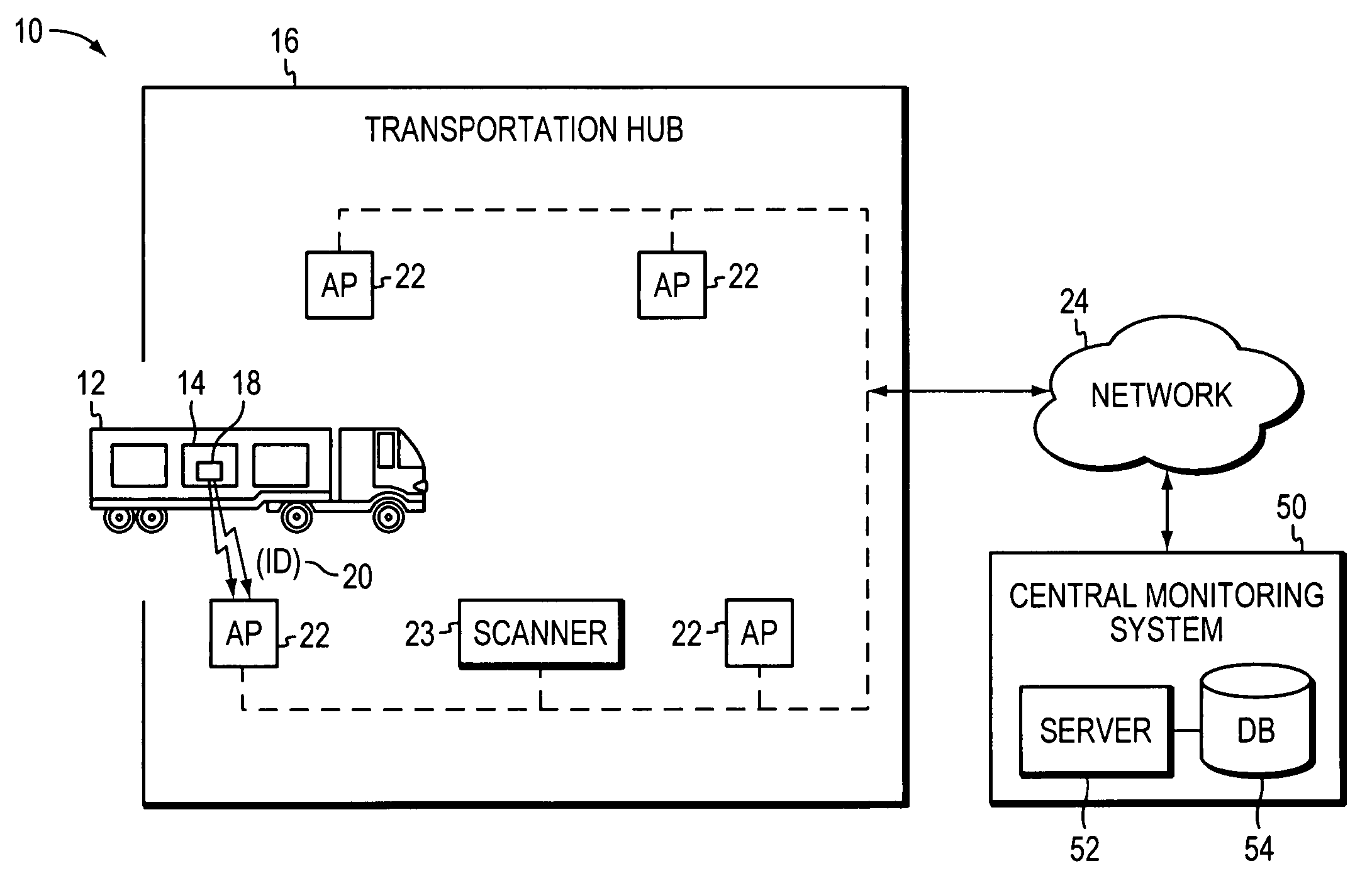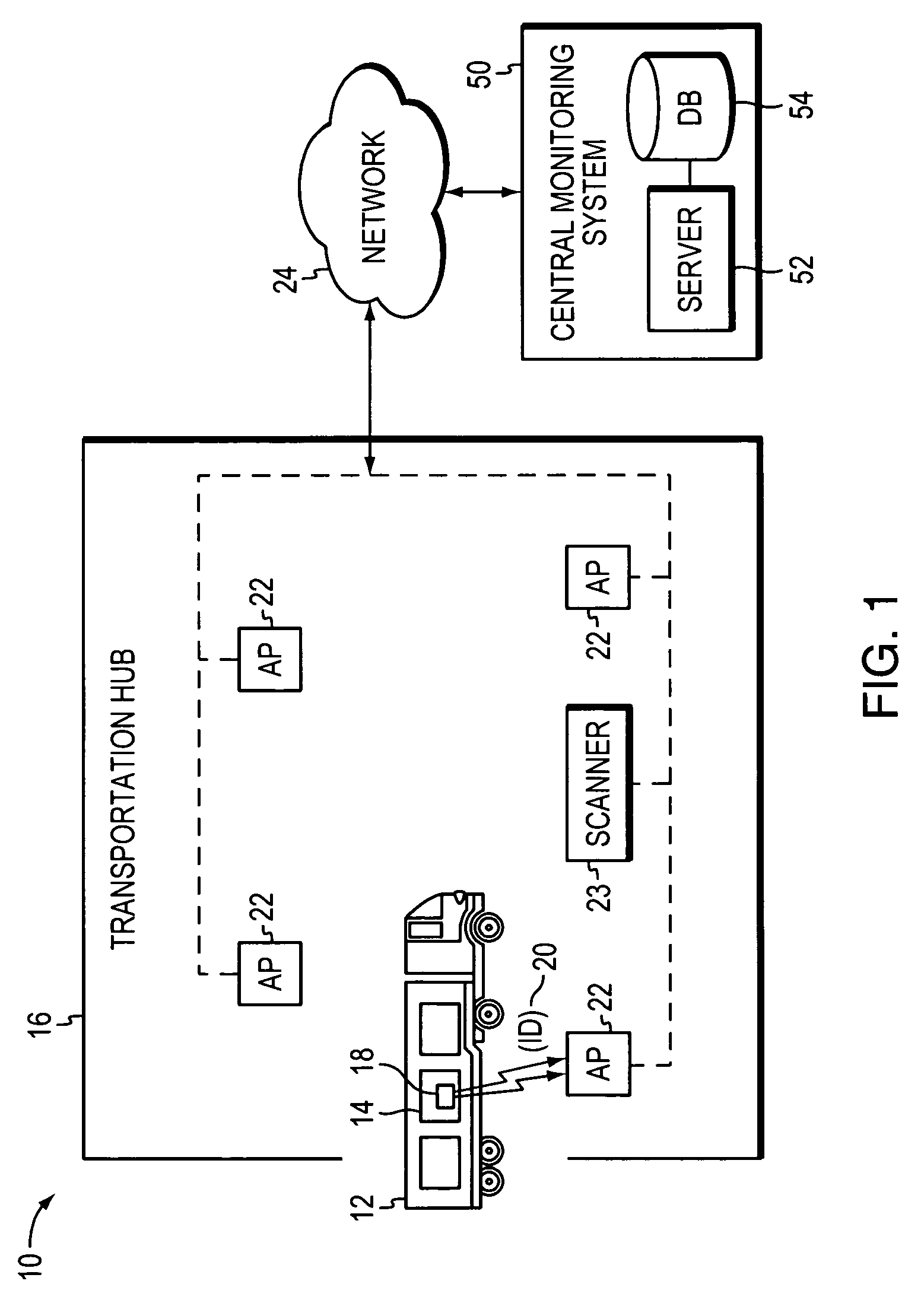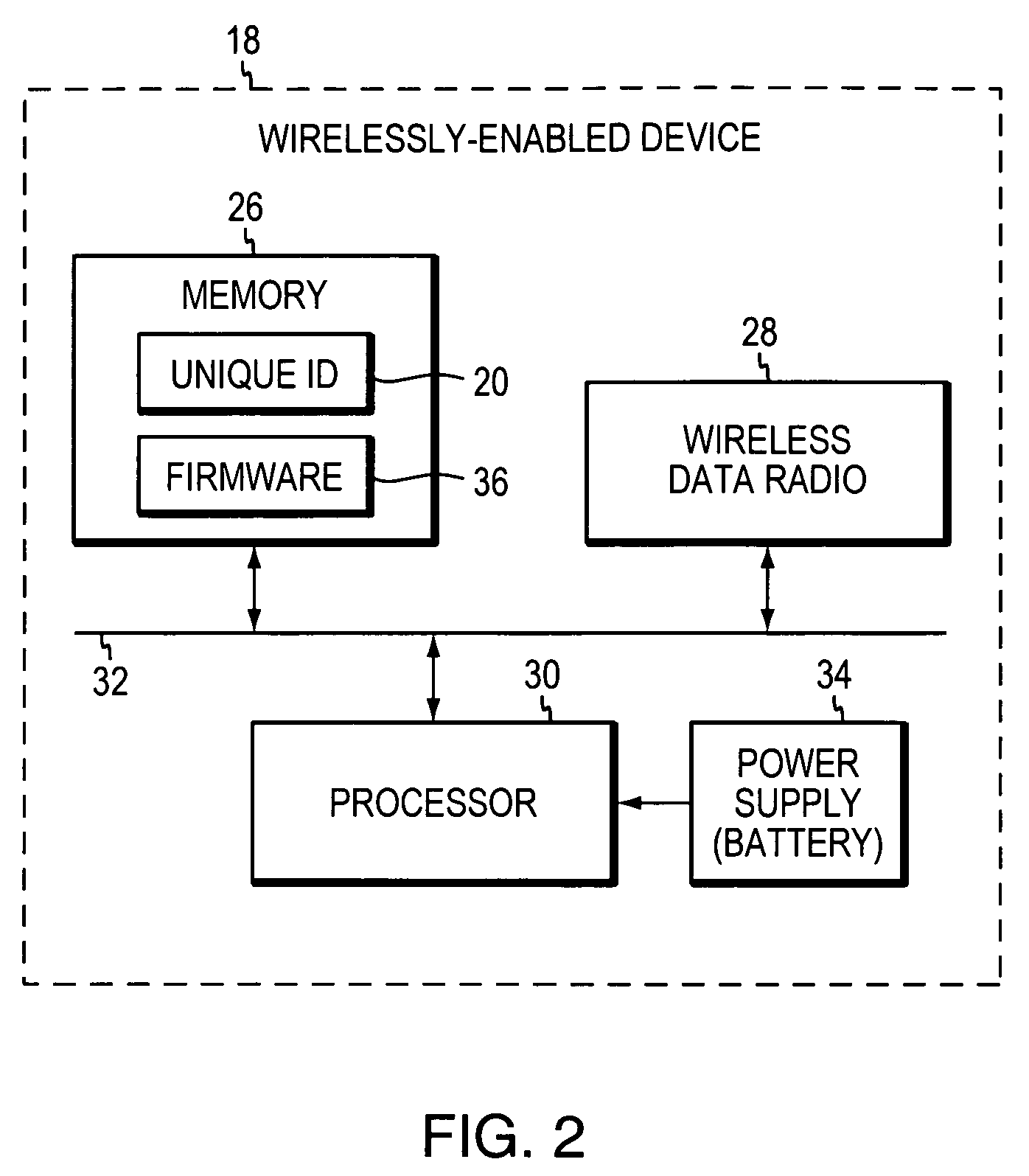Systems and methods for tracking items using wirelessly-enabled devices
a wirelessly enabled device and item technology, applied in the field of tracking and visibility systems and methods, can solve the problems of items flowing through the transportation system, creating significant logistical challenges, and ongoing tracking of high value assets, and achieve the effect of enhancing aspects
- Summary
- Abstract
- Description
- Claims
- Application Information
AI Technical Summary
Benefits of technology
Problems solved by technology
Method used
Image
Examples
Embodiment Construction
[0019] The present invention now will be described more fully hereinafter with reference to the accompanying drawings, in which some, but not all embodiments of the invention are shown. Indeed, the invention may be embodied in many different forms and should not be construed as limited to the embodiments set forth herein; rather, these embodiments are provided so that this disclosure will satisfy applicable legal requirements. Like numbers refer to like elements throughout.
[0020] Generally described, the present invention is directed to tracking and visibility systems and methods that can be used to augment aspects of traditional systems by implementing mechanisms for independently detecting and verifying the whereabouts of particular objects moving through a carrier's logistics network. These mechanisms are preferably implemented without having to alter the outward appearance or manner in which such objects would otherwise be shipped. At a high level, the present invention accompl...
PUM
 Login to View More
Login to View More Abstract
Description
Claims
Application Information
 Login to View More
Login to View More - R&D
- Intellectual Property
- Life Sciences
- Materials
- Tech Scout
- Unparalleled Data Quality
- Higher Quality Content
- 60% Fewer Hallucinations
Browse by: Latest US Patents, China's latest patents, Technical Efficacy Thesaurus, Application Domain, Technology Topic, Popular Technical Reports.
© 2025 PatSnap. All rights reserved.Legal|Privacy policy|Modern Slavery Act Transparency Statement|Sitemap|About US| Contact US: help@patsnap.com



